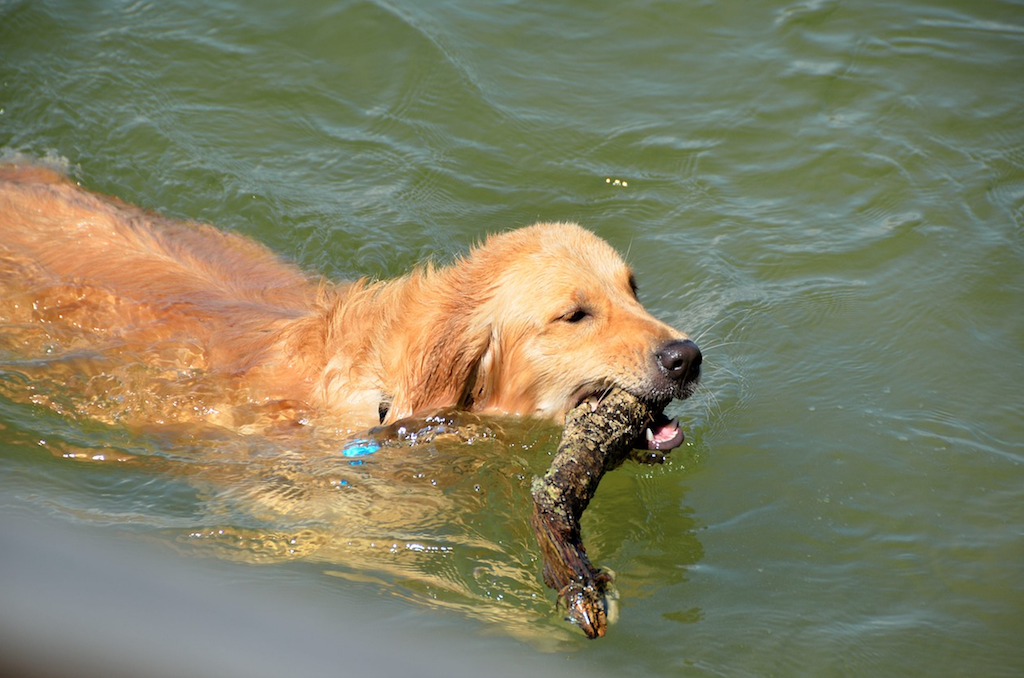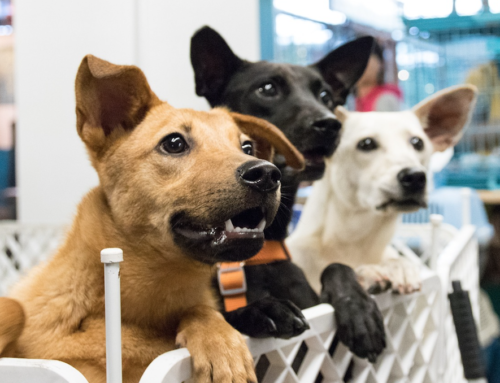
Three Ways to Help Your Overweight Dog
Roughly 55 percent of dogs are classified as overweight or obese, according to the Association for Pet Obesity Prevention. Maintaining your dog’s health is part of our job as a responsible pet owner. That job entails making sure your dog maintains a healthy weight. Size and weight will differ by breed. However, there are some tell-tale signs of an overweight dog.
Look at your dog from the side. Do they have a sagging waistline and belly? If so, they may be carrying some extra weight around. Although it can differ by breed, your dog’s waist should be slightly raised rather than hanging. Your dog’s abdomen should not be the same level as their chest.
If your dog appears to be overweight, schedule an appointment with your veterinarian to rule out any underlying health conditions first. As an example, one common sign of low thyroid function (hypothyroidism) in dogs is weight gain. Once they have a check-up, you might consider revisiting your dog’s diet and exercise plan with your veterinarian.
In addition to the advice you get from your vet, here are three ways you can help an overweight dog.
-
Establish portion control.
Generally speaking, dogs should be fed twice a day. Your dog’s breed, age, size, and energy level will all factor into the frequency they should eat and how much. For example, if you have a puppy, they’ll need small meals throughout the day as they transition from their mother’s milk to solid food. At roughly four months, your puppy may begin eating three times a day and then later transition to twice daily.
To determine how much you should feed an adult dog, use their weight and the feeding chart on the back of their dog food packaging. Avoid using online dog food charts as a guide, as they might be outdated or they may not be specific to the exact type of food you’re feeding your dog.
Also remember that food labels err on the side of over feeding and are written for the most active dogs and cats. So if your dog is more of couch potato, the food labels may overstate the portion requirements.
-
Consider integrating whole foods, like vegetables, into your dog’s diet.
One of the recent pet trends we love is incorporating whole foods into your dog’s diet. JustFoodForDogs, for instance, creates daily meals for dogs with ingredients people can also eat. They also have a large variety, including beef and russet potato, fish and sweet potato, and venison and squash.
If you’re on a tight budget, you can also incorporate some whole foods into your dog’s diet yourself, such as low-sodium green beans. The American Kennel Club suggests feeding your dog their regular meal in the morning and replacing the second meal with green beans, a bit of kibble and a dog multivitamin.
You can also sub out store-bought treats with lower calorie, cost-effective apple slices or chopped carrots. You share everything else with your dog — your home, your bed, your vacations — why not share groceries?
-
Boost their activity level.
One of the best ways you can help dogs get exercise is by going for a walk together. It’s a great way to boost your dogs’ cardiovascular health — and your own. Low impact exercise that helps to keep your pet’s body mass lower which also lowers impact on joints and may help to decrease osteoarthritis. Additionally, it’s a great bonding activity. Whether you’re strolling down city sidewalks or following a nature trail, being outside comes with a number of mental health perks. It’s been proven to lower stress and improve your mood.
However, we also understand that it can be difficult to fit in very many walks if you work eight-plus hours a day at an office. That said, if you can fit in a walk before and after work, it will make a difference. If you have a fenced-in yard, you might also consider installing a doggy door. This allows your pet to get some outdoor play (and access the “bathroom”) while you’re away.
On the weekends, there’s nothing better than letting your dog run around the park with the pack. BringFido has a list of dog-friendly parks and beaches, organized by state. If you find a great dog beach, consider packing this Chuckit! Sport Launcher. It allows you to throw balls up to three times further, with less effort, and — bonus — the thrower allows you to pick up the ball, hands-free. No more picking up tennis balls covered in drool. Win, win, win.
By following these tips, you’ll be helping your overweight dog regain his or her health — and enjoy many more dog birthdays to come.




